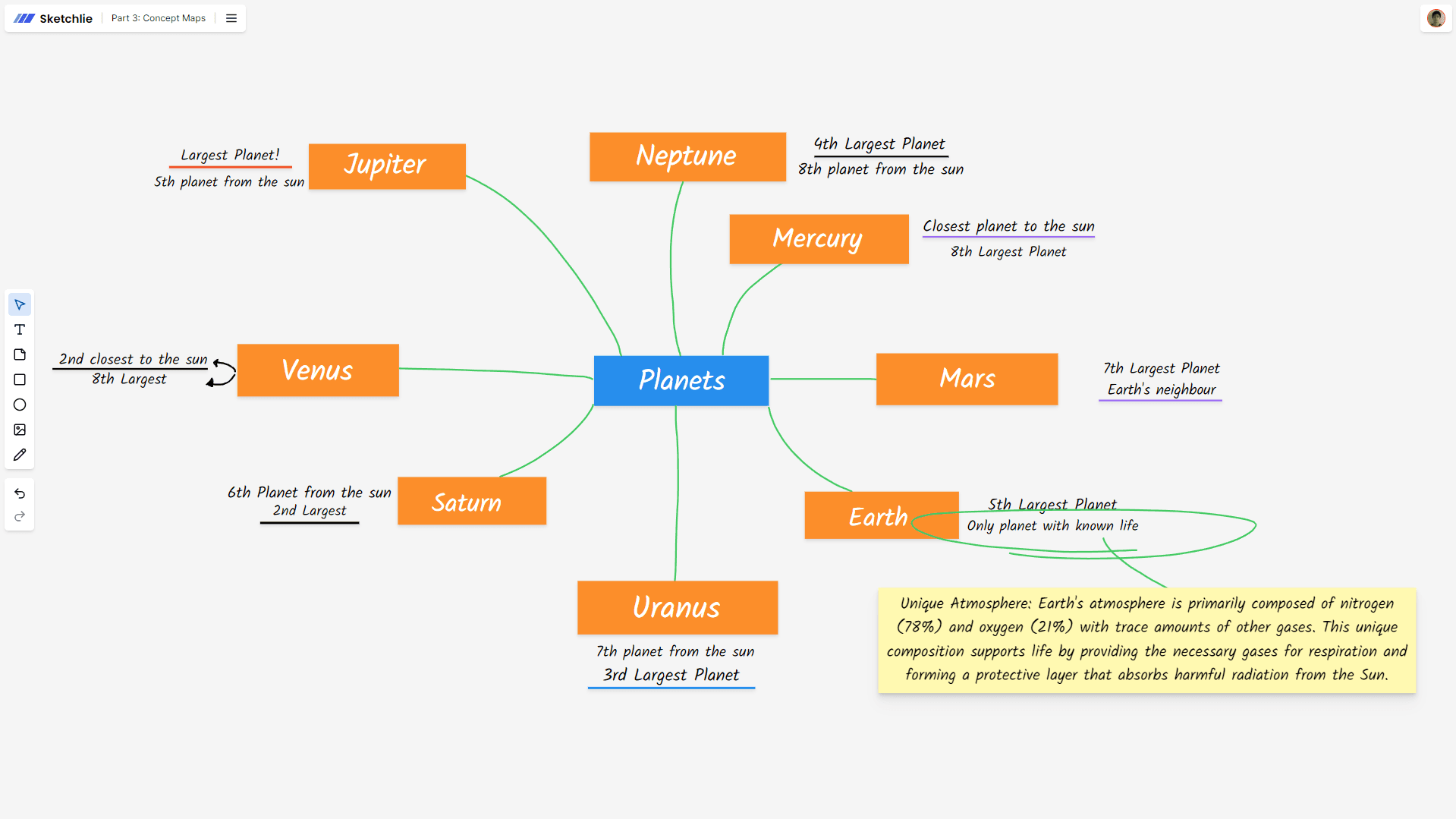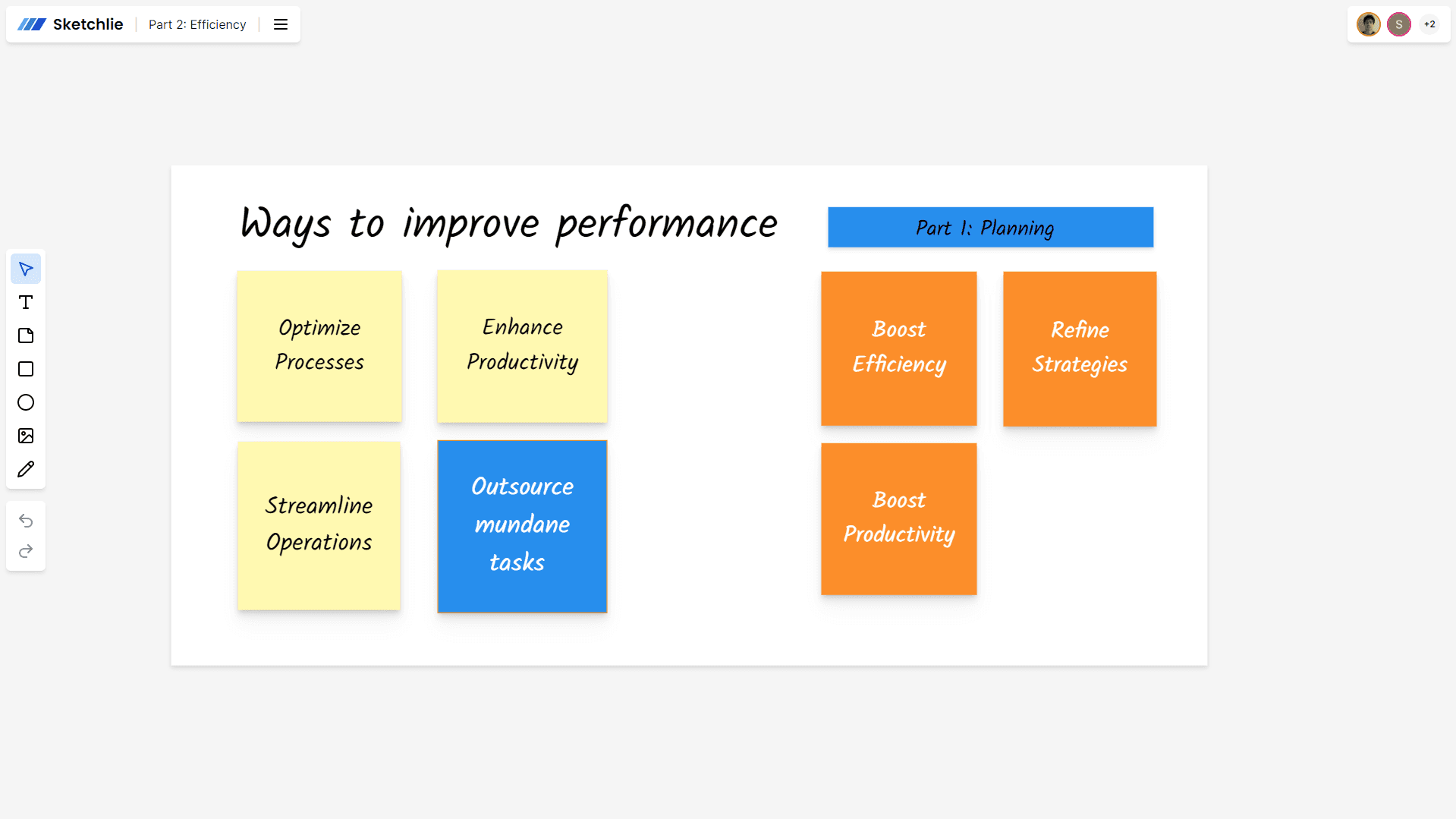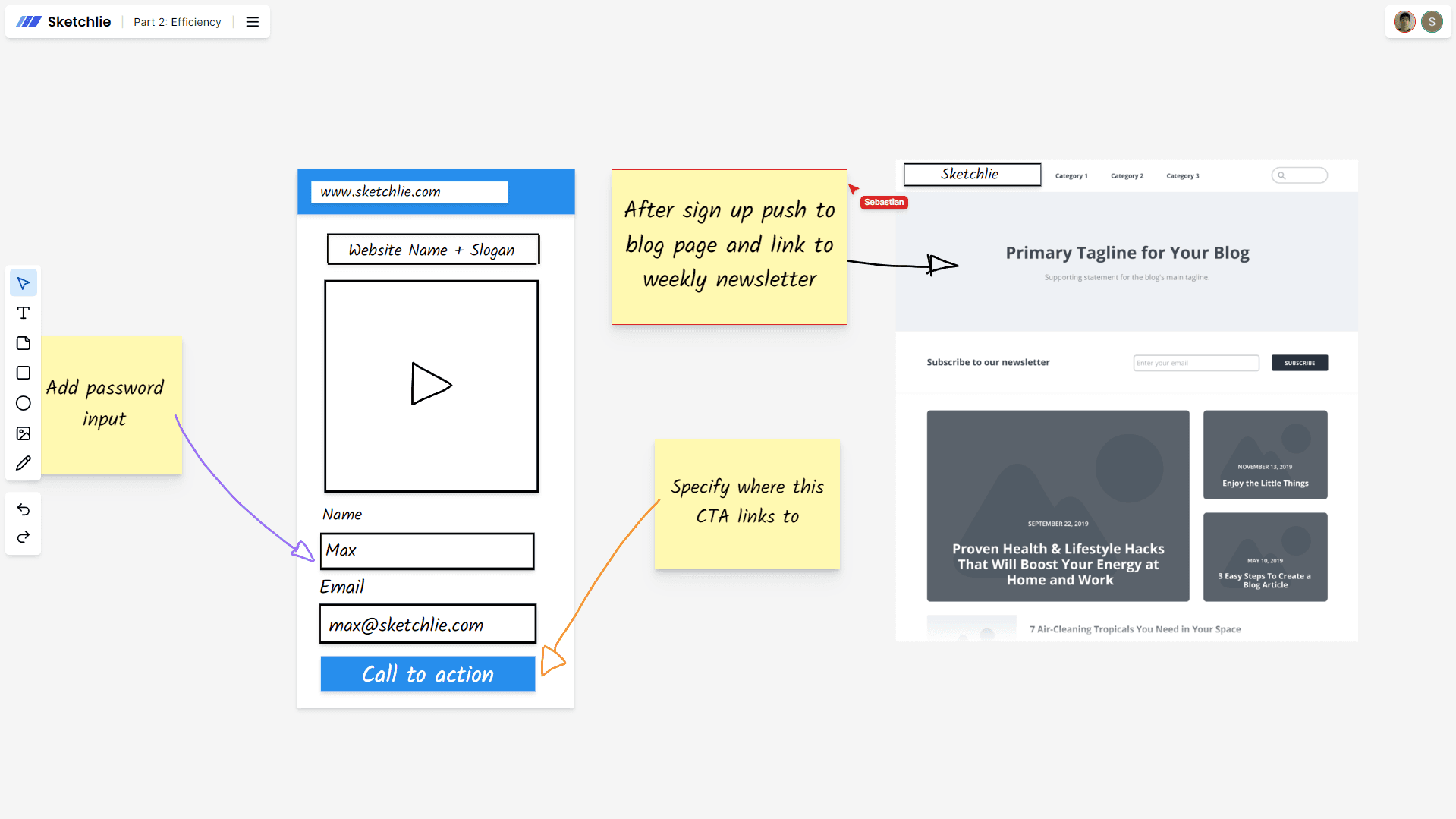Flowchart

If you're looking for answers about flowcharts, you've come to the right place. At Sketchlie, we understand the importance of visualizing processes and data, which is why we offer a variety of tools to help you create flowcharts quickly and easily.
1. What is a Flowchart?
A flowchart is a visual representation of a process or algorithm. Essentially, it's a sequence of ordered steps presented through graphic symbols to illustrate the sequence of decisions made to solve a problem or execute a specific task. These diagrams are a powerful tool in various fields, from engineering and programming to project management and education.
2. How are Flowcharts Used?
Flowcharts are a versatile tool used in a variety of contexts. Here are some common ways they are used:
- Software Development: In software development, flowcharts are used to visualize the process of an algorithm or program, facilitating the understanding of data flow and program logic.
- Project Management: In project management, flowcharts help identify key project stages, dependencies between tasks, and potential bottlenecks, allowing for more efficient planning and better resource allocation.
- Business Processes: In the business world, flowcharts are used to model and optimize business processes, identifying areas for improvement and potential failure points.
3. How to Create a Flowchart
Creating a flowchart may seem like a complicated task, but with the right tools and a structured approach, you can create one easily. Here are some basic steps to make a flowchart:
- Define the process: Before starting to draw the diagram, it's important to have a clear understanding of the process to be represented. Identify the key steps and decisions involved in the process.
- Select symbols: Choose the symbols and shapes that best represent each step of the process. Common symbols include rectangles for actions, diamonds for decisions, and arrows for directional flow.
- Draw the diagram: Use a drawing tool, either on paper or in specialized software like Sketchlie's online whiteboard, to create the flowchart. Make sure to connect the symbols logically and clearly.
- Review and refine: Once you've completed the diagram, review it to ensure it's accurate and understandable. Make necessary adjustments to improve the clarity and consistency of the diagram.
4. Types of Flowchart Techniques
There are several types of flowchart techniques, each with its own characteristics and specific applications. Some of the most common types include:
- Sequential Flowchart: This type of flowchart shows the process in a linear sequence, where each step is executed in order. It's useful for representing simple and linear processes.
- Decision Flowchart: In this type of diagram, decision symbols (diamonds) are used to represent decision points in the process. Depending on the condition, the flow is directed to different paths.
- Functional Flowchart: This type of diagram focuses on the functions or activities performed in a process, showing how they relate to each other. It's useful for understanding the structure and interaction of functions within a system.
- Data Flow Diagram: In this type of diagram, the flow of data through a system is represented, showing how information is transformed and processed. It's useful for modeling information systems and databases.
5. Types of Flowcharts
In addition to diagramming techniques, there are different types of flowcharts used to represent various processes and systems. Some of the most common types include:
- Process Flowchart: This type of diagram shows the flow of activities in a specific process, from start to finish. It's useful for visualizing and analyzing the workflow in a given process.
- Data Flow Diagram: In this type of diagram, the flow of data through a system or process is represented, showing how information is transformed and used. It's useful for modeling information and communication systems.
- Program Flowchart: This type of diagram is used in programming to represent the control flow of a program, showing the sequence of instructions and decisions. It's useful for designing, debugging, and documenting algorithms and programs.
- Entity Data Flow Diagram: In this type of diagram, the structure and relationships between entities in an information system are represented, including databases and information systems. It's useful for designing and documenting databases and information systems.
6. History of Flowcharts
Flowcharts have a long history dating back to the 19th century when they were first used in engineering and process management. One of the first diagramming systems was developed by engineer Frank Gilbreth, who used it to analyze and improve manufacturing processes in industry.
During the 20th century, flowcharts became even more popular with the advent of computing and programming. They became a standard tool in the design and documentation of algorithms and computer programs, facilitating understanding and communication between developers and users.
In the current digital era, flowcharts have evolved with the development of specialized software and online tools that facilitate their creation and collaboration. At Sketchlie, we are committed to continuing to innovate in the field of flowcharts, providing our users with the most advanced tools for creating and collaborating on flowcharts.
7. What is a Flowchart used for
Flowcharts have a variety of applications and benefits in different areas and disciplines. Some of the most common uses include:
- Visualizing Processes: Flowcharts allow for clear and concise visualization and understanding of processes and procedures, identifying steps, decisions, and workflows.
- Process Analysis: They are useful for analyzing and optimizing processes, identifying areas for improvement, bottlenecks, and redundancies in the workflow.
- Documentation: Flowcharts are an effective way to document processes and procedures, providing a visual reference that can be used for training, communication, and auditing.
- Communication: They facilitate communication between different teams and stakeholders by providing a clear and concise visual representation of a process or system.
- Project Planning: They are used in project planning and management to identify tasks, sequences, and dependencies, helping to allocate resources and establish timelines.
8. Benefits of Creating Flowcharts
Creating flowcharts offers a series of benefits both at the individual and organizational level. Some of the main benefits include:
- Clarity and Understanding: Flowcharts provide a clear and concise visual representation of a process, facilitating understanding and communication between individuals or teams.
- Identification of Improvements: They allow for the identification of areas for improvement and optimization in a process, helping to increase efficiency and reduce execution times.
- Collaboration: They facilitate collaboration between teams by allowing for collaborative creation and editing of flowcharts in real-time, regardless of geographical location.
- Documentation and Reference: They serve as a documentation and reference tool for processes and procedures, providing a visual guide that can be used for training and auditing.
9. Tips for Creating an Effective Flowchart
Creating an effective flowchart requires attention to detail and a structured approach. Here are some tips to help you create flowcharts that are clear, concise, and easy to understand:
- Simplify the Process: Identify the key steps and eliminate any unnecessary information or detail to keep the diagram clean and easy to follow.
- Use Standard Symbols: Use standard symbols and recognized conventions to represent actions, decisions, and data flows, which facilitates understanding of the diagram.
- Maintain Consistency: Maintain a consistent structure and style throughout the diagram, using consistent font sizes and colors to improve readability.
- Label Clearly: Make sure to label each symbol and connection clearly and descriptively, using concise but informative text.
10. Examples of Flowcharts
To better understand how flowcharts look and how they are used in practice, here are three examples of common situations where they can be applied:
- License Application Process: A flowchart showing the step-by-step process for applying for and approving a license, from submitting the application to issuing the license.
- Online Purchase Process: A flowchart illustrating the workflow in the online purchase process, from product selection to payment and order confirmation.
- Problem-Solving Process: A flowchart describing the steps to follow to solve a specific problem, from problem identification to solution implementation.
11. Tips for your Flowchart Activities
When carrying out activities related to flowcharts, it's important to keep in mind certain tips that can improve the efficiency and effectiveness of your work. Here are some helpful suggestions:
- Collaborate as a Team: Encourage collaboration among team members when creating and editing flowcharts together, taking advantage of real-time collaboration tools.
- Use Templates: Take advantage of the pre-designed templates available in Sketchlie to speed up the flowchart creation process and ensure consistency in design.
- Gather Feedback: Request comments and suggestions from other team members to improve the clarity and accuracy of your flowcharts.
- Document Changes: Keep a record of changes made to flowcharts, including the date and person responsible for each modification, to facilitate version management.
Index
- 1. What is a Flowchart?
- 2. How are Flowcharts Used?
- 3. How to Create a Flowchart
- 4. Types of Flowchart Techniques
- 5. Types of Flowcharts
- 6. History of Flowcharts
- 7. What is a Flowchart used for
- 8. Benefits of Creating Flowcharts
- 9. Tips for Creating an Effective Flowchart
- 10. Examples of Flowcharts
- 11. Tips for your Flowchart Activities

